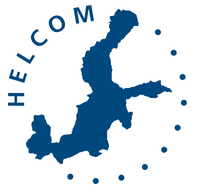The second HELCOM holistic assessment – State of the Baltic Sea – will be the common basis for governments for further measures to protect the seaKey components of the State report are the focal topics for a HELCOM meeting this weekA new HELCOM Recommendation on biotopes, habitats and biotope complexes and HELCOM monitoring guidelines are among other topics of the 5-day meeting in Tallinn, EstoniaAs a part of the sizeable endeavour by HELCOM to assess the environmental status of the entire Baltic Sea by 2017, many necessary building blocks are discussed by the HELCOM State and Conservation Working Group this week. The convenes in Tallinn, Estonia for advancing the next HELCOM holistic – State of the Baltic Sea – , finalizing the Recommendation on biotopes, habitats and biotope complexes, and reviewing and upgrading HELCOM monitoring guidelines, among others. Integration tools bring together the many parameters to provide sensible and reliable assessments of the state of the Baltic Sea marine environment. Photo: Metsähallitus NHS/Essi Keskinen Integration tools for biodiversity and hazardous substances have been developed intensively by HELCOM this year. The 2017 ‘State of the Baltic Sea’ builds on a vast amount of HELCOM quality assured data and indicator results. Tools, designed to address specific environmental issues, are needed to bring together the many parameters to provide sensible and reliable assessments of the state of the Baltic Sea marine environment. The tools integrate the results of indicators such as on distribution of marine mammals, abundance of birds, size of zooplankton, and quality of benthic organisms, to arrive at the status of biodiversity. The meeting this week will work on the final form of these tools. For hazardous substances, the concentration of dioxins, PCBs and other contaminants and their effects are considered. The HELCOM approach to assess the pressures and impacts on the marine environment – the Baltic Sea Impact Index – has also been upgraded this year with new data and special attention given to the spatial extent of impacts. A key issue for the meeting is to agree on a set of HELCOM core and the associated definition of Good Environmental Status. During 2016, countries leading the indicator development and expert groups have worked towards making the core indicators operational. In addition, a draft new HELCOM Recommendation on biotopes, habitats and biotope complexes will be elaborated at the meeting, with the view to have it ready for approval by the main HELCOM delegates in December 2016. Coordinated monitoring guidelines, a prerequisite for making coherent and comparable regional assessments, continues to be scrutinized by the Working Group and fully reviewed and revised HELCOM monitoring guidelines are anticipated to be ready by mid-2017. The Fifth of the Working Group on the State of the Environment and Nature Conservation, (STATE & CONSERVATION 5-2016) will be convened on 7-11 November 2016 in Tallinn, Estonia. The meeting is chaired by the co-Chairs of the group, Ms Penina Blankett, Finland, and Mr. Urmas Lips, Estonia. All documents will be public after the meeting. * * * Note for editors is an intergovernmental organization made up of the nine Baltic Sea coastal countries and the European Union. Founded in 1974, its primary aims as a governing body are to protect the marine environment of the Baltic Sea from all sources of pollution, as well as to ensure safe maritime navigation. The official name of HELCOM is the Baltic Marine Environment Protection Commission; it is the governing body of the Helsinki Convention. HELCOM State & Conservation covers monitoring and assessment functions as well as nature conservation and biodiversity protection at HELCOM. It works across the monitoring-indicators-assessment chain to develop HELCOM thematic assessment tools and conducts the coherent holistic assessment of the ecosystem’s health. The next State of the Baltic Sea assessment – or HOLAS II – will give a comprehensive overview of the ecosystem health of the Baltic Sea. The first results are scheduled for release in mid-2017 and finalized by mid-2018. The update on the overall state of the entire Baltic Sea is worked on by the (2014–18), which develops common concepts and methods for the status assessment based on core indicators; creates and tests the tools for aggregated results and, finally, performs assessments at a regional scale. The development of the assessment methods is supported by other projects such as and BalticBOOST. is an EU co-financed project coordinated by HELCOM. The main objective of the project is to improve regional coherence in the implementation of marine strategies through improved data flow, assessments, and knowledge base for development of measures. The project (2015–16) will develop assessment tools and set up data arrangements to support indicator-based assessments of the state of and pressures on the Baltic Sea. * * * For more information, please contact:Ulla Li ZweifelProfessional SecretaryHELCOMTel. +358 46 850 9198Skype: helcom64E-mail: ullali.zweifel(at)helcom.fi Johanna LaurilaInformation SecretaryHELCOMTel: +358 40 523 8988Skype: helcom70E-mail: johanna.laurila(at)helcom.fi
The second HELCOM holistic assessment – State of the Baltic Sea – will be the common basis for governments for further measures to protect the sea.
